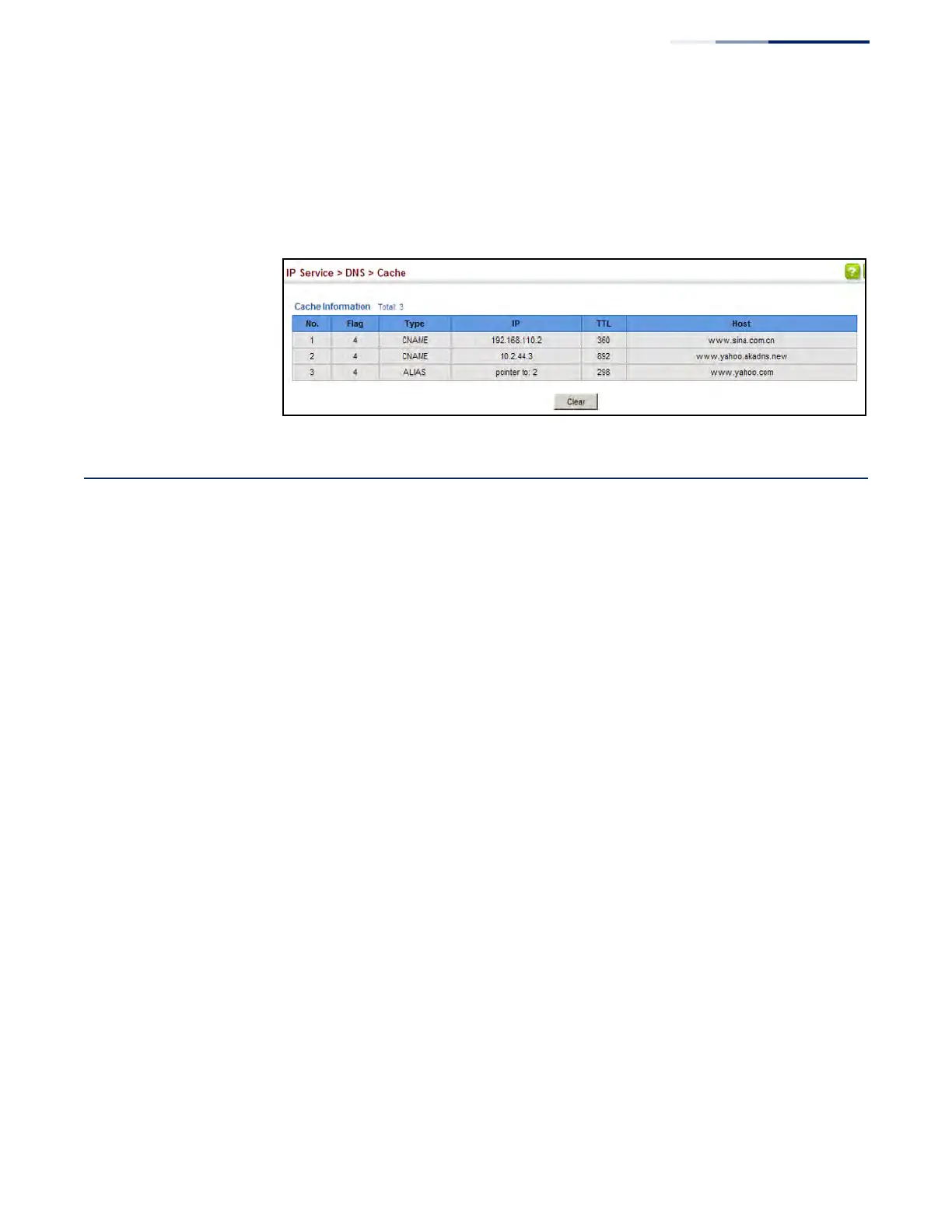Chapter 16
| IP Services
Dynamic Host Configuration Protocol
– 649 –
Web Interface
To display entries in the DNS cache:
1. Click IP Service, DNS, Cache.
Figure 420: Showing Entries in the DNS Cache
Dynamic Host Configuration Protocol
Dynamic Host Configuration Protocol (DHCP) can dynamically allocate an
IP address and other configuration information to network clients when they boot
up. If a subnet does not already include a BOOTP or DHCP server, you can relay
DHCP client requests to a DHCP server on another subnet, or configure the DHCP
server on this switch to support that subnet.
When configuring the DHCP server on this switch, you can configure an address
pool for each unique IP interface, or manually assign a static IP address to clients
based on their hardware address or client identifier. The DHCP server can provide
the host’s IP address, domain name, gateway router and DNS server, information
about the host’s boot image including the TFTP server to access for download and
the name of the boot file, or boot information for NetBIOS Windows Internet
Naming Service (WINS).
Specifying a DHCP
Client Identifier
Use the IP Service > DHCP > Client page to specify the DHCP client identifier for a
VLAN interface.
Command Usage
◆ The class identifier is used identify the vendor class and configuration of the
switch to the DHCP server, which then uses this information to decide on how
to service the client or the type of information to return.
◆ The general framework for this DHCP option is set out in RFC 2132 (Option 60).
This information is used to convey configuration settings or other identification
information about a client, but the specific string to use should be supplied by
your service provider or network administrator. Options 60, 66 and 67
statements can be added to the server daemon’s configuration file.

